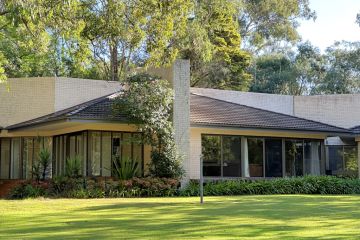Predicting house prices isn’t a perfect science

Property buyers, whether owner-occupiers or investors, naturally want to know how well the market is likely to do over time, but modelling prices can be fraught with problems because each home is different and every sale reflects the unique ambitions of the buyer and seller.
A simple auction on a reality TV show such as The Block shows how homes of roughly the same size in the same location can sell at very different prices in a matter of minutes, proving that the value of a home is really all about how much someone wants to live there – it’s not a scientific calculation.
But property ownership is a big part of our lifestyle. Australians are strongly committed to both home ownership and residential property investment. Home-ownership rates have hovered at approximately 70 per cent for decades, with residential investors typically accounting for up to half of all sales – and so buyers and sellers need market information they can trust.
In a hot property market, one suburb or town can outperform another so significantly that developing a clear picture of the trends in the market as a whole becomes pretty difficult to get right – especially given the discreet nature of home sales. Each transaction is unique geographically, as are the circumstances and motivations of buyers and sellers.
Factors that count
Several factors affect house-price modelling, such as the price mix of properties sold over a given period – a greater proportion of either higher-priced or cheaper property sales can skew prices upwards or downwards, respectively. A slow housing market worsens this disparity.
Modelling can also be more challenging when each section of the market performs differently. Data collection lags and seasonal variations due to higher levels of activity in the autumn and spring selling seasons can also complicate modelling.
Property experts typically measure the midpoint or median of a series of sales within a suburb, region or city and compare results with previous measures to gain insight into price levels and price movements over time.
ABS data
The Australian Bureau of Statistics (ABS), in its quarterly house-price series, uses a complex median-price model to gauge house prices in a given market. The ABS uses a stratified median-house-price model that accounts for variations in the price mix of properties in a particular period.
With at least three months of sales data in its calculations, the ABS model uses higher levels of information to reduce volatility in its results. Most published models, however, produce similar outcomes in tracking the underlying trend of the marketplace over the medium and longer term – whether prices are falling, steady or growing overall in a particular market.
Getting enough data is the key for effective price modelling, as only about 6 per cent of properties change hands every year. And there can be long delays between the time a sale is completed and the time it shows up in the official statistical reports.
Whether people are buying, selling or investing, they need the insights that these reports can sometimes provide.
We recommend
We thought you might like
States
Capital Cities
Capital Cities - Rentals
Popular Areas
Allhomes
More







